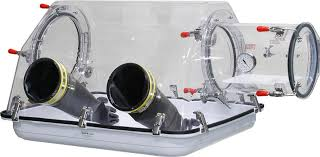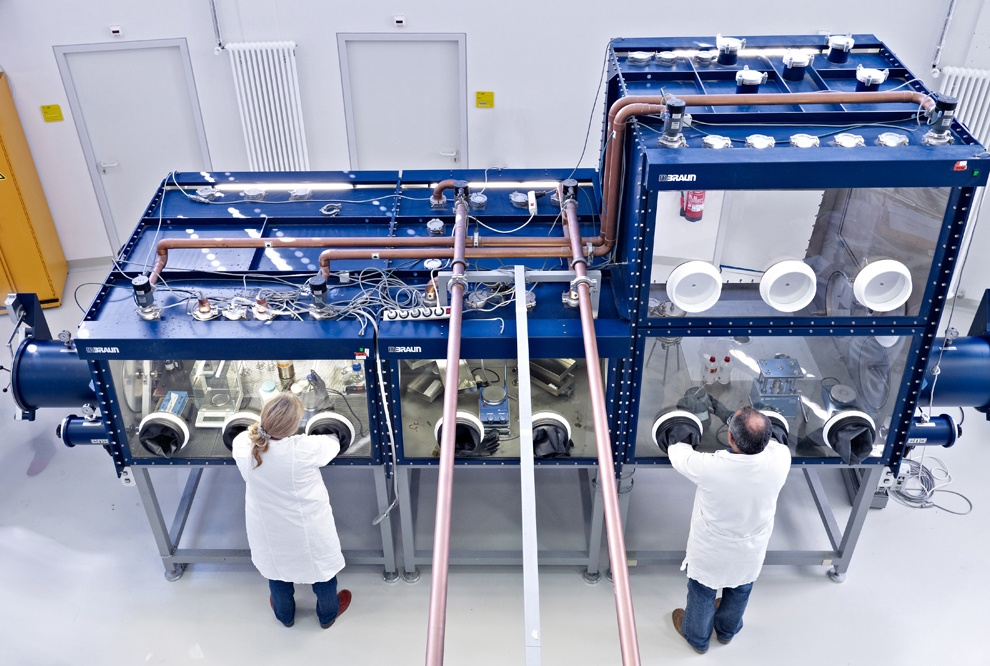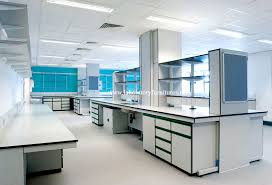The Heartbeat of Your Laboratory: Exploring Gas Piping & Distribution Networks

The Vital Pulse of Your Laboratory: A Deep Dive into Gas Piping & Distribution Networks

In the intricate world of scientific research, laboratories stand as the epicenter of discovery, where innovation flourishes and groundbreaking advancements are born. Within these specialized environments, a complex web of interconnected systems operates seamlessly, each playing a vital role in ensuring the smooth execution of experiments and the generation of reliable data. Among these critical systems, Gas Piping & Distribution Networks emerge as a silent yet indispensable force, providing the lifeblood of many scientific endeavors.
Imagine a laboratory devoid of the essential gases that fuel its instruments and processes. The very foundation of research would crumble, leaving scientists stranded without the tools necessary to unravel the mysteries of the natural world. From the delicate flame of a Bunsen burner to the precise flow of gases in sophisticated analytical instruments, Gas Piping & Distribution Networks serve as the invisible backbone that underpins countless scientific breakthroughs.
The importance of these networks extends far beyond the mere delivery of gases. Their design, installation, and maintenance are crucial factors that directly impact the safety, reliability, and efficiency of laboratory operations. A poorly designed or inadequately maintained gas system can pose significant risks, jeopardizing the well-being of researchers, compromising the integrity of experiments, and potentially leading to costly downtime.
In this comprehensive exploration, we delve into the intricate world of Gas Piping & Distribution Networks, unraveling the complexities of their design, installation, and maintenance. We will examine the critical considerations that ensure the safe, reliable, and efficient delivery of gases to laboratory instruments, empowering researchers to focus on their scientific pursuits with confidence.
Our journey will take us through the labyrinthine pathways of gas piping, exploring the diverse materials, fittings, and components that form the backbone of these essential networks. We will delve into the intricacies of gas distribution systems, examining the various configurations and technologies employed to ensure precise and controlled delivery of gases to specific locations within the laboratory.
Furthermore, we will shed light on the crucial aspects of safety and regulatory compliance, highlighting the stringent standards and protocols that govern the design, installation, and operation of Gas Piping & Distribution Networks. We will explore the potential hazards associated with gas leaks and explosions, emphasizing the importance of regular inspections, maintenance, and emergency preparedness.
This exploration is not merely a technical treatise; it is a roadmap for laboratory professionals seeking to optimize their gas systems, ensuring the safety, reliability, and efficiency of their research endeavors. By understanding the intricacies of Gas Piping & Distribution Networks, laboratory managers, technicians, and procurement professionals can make informed decisions that enhance the overall performance and productivity of their facilities.
Join us as we embark on this journey into the heart of your laboratory, where the flow of gases fuels the pursuit of scientific knowledge and innovation. Together, we will unravel the complexities of Gas Piping & Distribution Networks, empowering you to navigate the challenges and harness the potential of these essential systems.
The Vital Role of Gas Piping & Distribution Systems in Laboratory Operations
In the intricate world of scientific research, laboratories serve as the epicenter of innovation, where groundbreaking discoveries are made and technological advancements are propelled forward. At the heart of these laboratories lies a critical infrastructure that often goes unnoticed yet plays a pivotal role in ensuring the smooth and efficient operation of experiments and research activities. This infrastructure, known as the Gas Piping & Distribution Systems, is the lifeblood of the laboratory, providing a reliable and safe supply of essential gases that are indispensable for a wide range of scientific applications.
From the precise delivery of oxygen for cell cultures to the controlled flow of nitrogen for inert atmospheres, gas piping and distribution systems are the unsung heroes of laboratory operations. They ensure that researchers have access to the gases they need, when they need them, in the quantities required, and with the utmost precision. The reliability and integrity of these systems are paramount, as any disruption or malfunction can have significant consequences for research progress, experimental outcomes, and even the safety of laboratory personnel.
The importance of gas piping and distribution systems extends beyond the realm of basic laboratory operations. In specialized research areas such as analytical chemistry, materials science, and biotechnology, these systems are essential for conducting sophisticated experiments and achieving high-quality results. For instance, in analytical chemistry, gas chromatography-mass spectrometry (GC-MS) relies heavily on the precise delivery of carrier gases like helium and nitrogen, which are crucial for separating and identifying different compounds in a sample. In materials science, gas-phase deposition techniques, such as chemical vapor deposition (CVD), utilize gases like silane and ammonia to create thin films with specific properties. And in biotechnology, cell culture chambers often require a controlled atmosphere of oxygen, carbon dioxide, and nitrogen to maintain optimal growth conditions.
The complexity of gas piping and distribution systems varies depending on the size and scope of the laboratory, the types of gases used, and the specific research activities being conducted. However, all systems share common components that are essential for their functionality. These components include:
- Gas Cylinders: These are the primary source of gases for the laboratory. They come in various sizes and pressures, depending on the type of gas and the volume required. Gas cylinders are typically equipped with pressure regulators to control the flow rate and pressure of the gas.
- Piping: The piping system connects the gas cylinders to the various points of use in the laboratory. It is typically made of copper, stainless steel, or other materials that are compatible with the gases being transported. The piping system must be designed to withstand the pressure and temperature of the gases, and it must be properly installed and maintained to prevent leaks and other hazards.
- Valves: Valves are used to control the flow of gas through the piping system. They can be manually operated or automated, depending on the specific application. Valves are essential for isolating sections of the piping system, regulating the flow rate of gas, and preventing backflow.
- Manifolds: Manifolds are used to distribute gas from a single source to multiple points of use. They typically consist of a series of valves and connections that allow for the controlled flow of gas to different locations in the laboratory.
- Gas Detectors: Gas detectors are used to monitor the concentration of gases in the laboratory environment. They are essential for ensuring the safety of laboratory personnel and preventing the accumulation of hazardous gases.
The design and installation of gas piping and distribution systems require careful consideration of several factors, including:
- Gas Type: The type of gas being used will determine the materials used for the piping, the pressure rating of the system, and the safety precautions that must be taken.
- Flow Rate: The flow rate of gas required for each application will determine the size of the piping and the capacity of the gas cylinders.
- Pressure: The pressure of the gas will determine the strength of the piping and the type of valves used.
- Safety: The safety of laboratory personnel is paramount, and the gas piping and distribution system must be designed and installed to minimize the risk of leaks, fires, and other hazards.
- Accessibility: The gas piping and distribution system should be easily accessible for maintenance and repairs. It should also be located in a way that minimizes the risk of damage or interference with other laboratory equipment.
Proper maintenance and inspection of gas piping and distribution systems are essential for ensuring their reliability and safety. Regular inspections should be conducted to identify any leaks, corrosion, or other damage. The system should also be tested periodically to ensure that it is operating within the specified pressure and flow rate parameters. In addition, laboratory personnel should be trained on the proper use and handling of gases, as well as the emergency procedures to follow in case of a gas leak or other incident.
In conclusion, gas piping and distribution systems are an integral part of laboratory infrastructure, providing a reliable and safe supply of essential gases for a wide range of scientific applications. The design, installation, and maintenance of these systems require careful consideration of safety, reliability, and accessibility. By investing in well-designed and well-maintained gas piping and distribution systems, laboratories can ensure that their research activities are conducted efficiently and safely, leading to groundbreaking discoveries and advancements in science and technology.
Products You may Like
Check out other IT- Tech product that suit your taste
Subscribe to our newsletter
Stay updated with IT-Tech Insights
Related posts
Check out other IT- Tech Scientific Resources

Captains of the Glove Box Universe: Movers and Shakers in the Industry
The Glove Box industry is a dynamic landscape driven by innovation and a commitment to laboratory safety. This article delves into the world of Glove Box manufacturers, examining their unique offerings, technological advancements, and impact on research and development. From established leaders to emerging players, we explore the companies driving the evolution of Glove Box technology, ensuring a secure and controlled environment for critical scientific work. Join us as we uncover the movers and shakers who are shaping the future of Glove Box technology.

Superhero Sidekicks: The Many Marvels of Glove Boxes
Glove Boxes are enclosed workstations designed to create a controlled environment for handling sensitive materials. They are widely used in laboratories for applications such as handling hazardous substances, conducting sterile procedures, and working with materials that require protection from atmospheric contaminants. Glove Boxes provide a barrier between the user and the work area, ensuring the safety of both the operator and the experiment. They are equipped with gloves that allow manipulation of materials within the box while maintaining a controlled atmosphere. Glove Boxes are essential for a wide range of scientific disciplines, including chemistry, biology, pharmaceuticals, and materials science. They play a crucial role in research, development, and quality control, enabling scientists to conduct experiments with precision and accuracy.

Who's Who in the World of Lab Furniture: Industry Giants and Their Premier Products
Navigating the world of laboratory furniture can be overwhelming. This article provides a comprehensive overview of industry leaders and their standout products. We explore key features, benefits, and considerations to help you make informed decisions. From ergonomic workstations to specialized storage solutions, we cover the essential aspects of lab furniture, empowering you to create a functional and efficient workspace.








































































